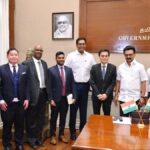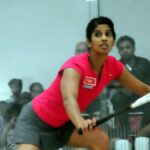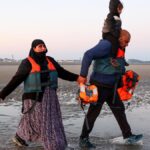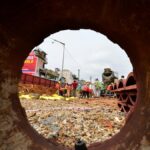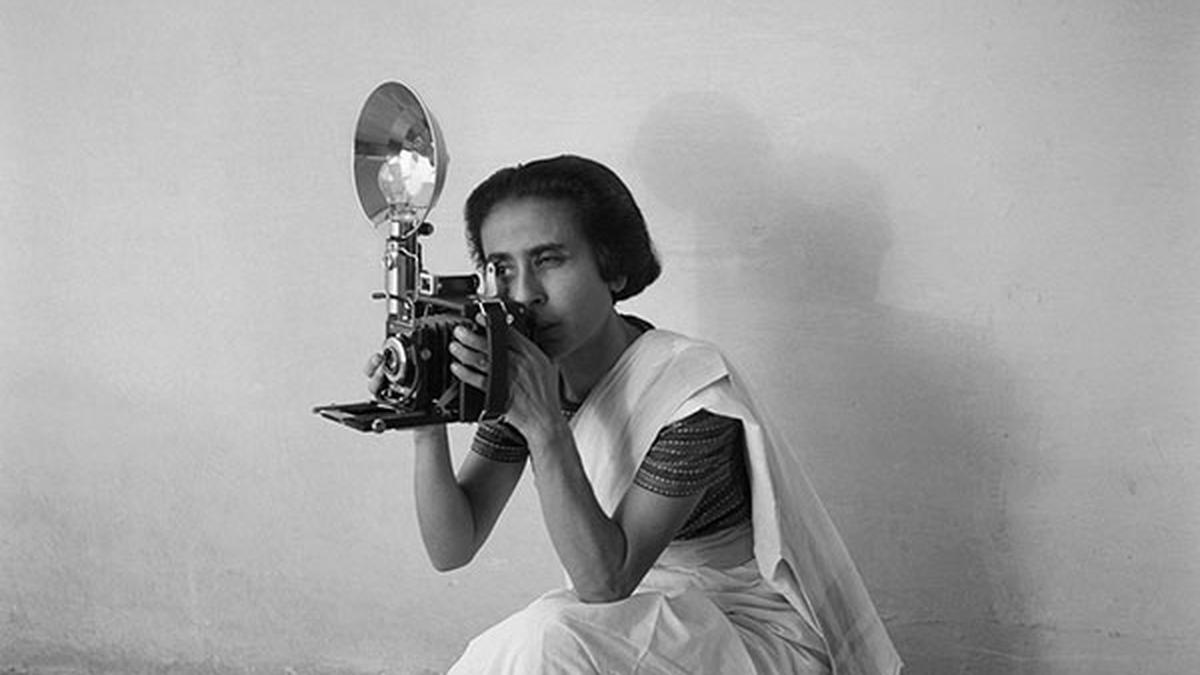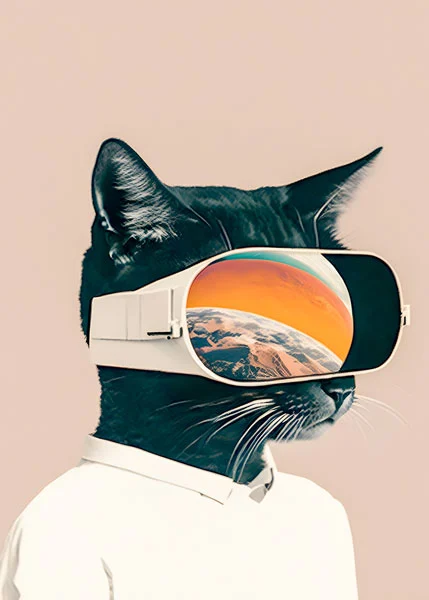Have you seen these iconic photographs from the past? (below) From the historic conference on Partition, Mountbatten’s final salute before leaving the country, and the country’s very first Republic Day parade to the arrival of the Dalai Lama in India, have you wondered who captured these iconic moments in Indian history? That would be none other than Homai Vyarawalla, the first Indian woman photojournalist.
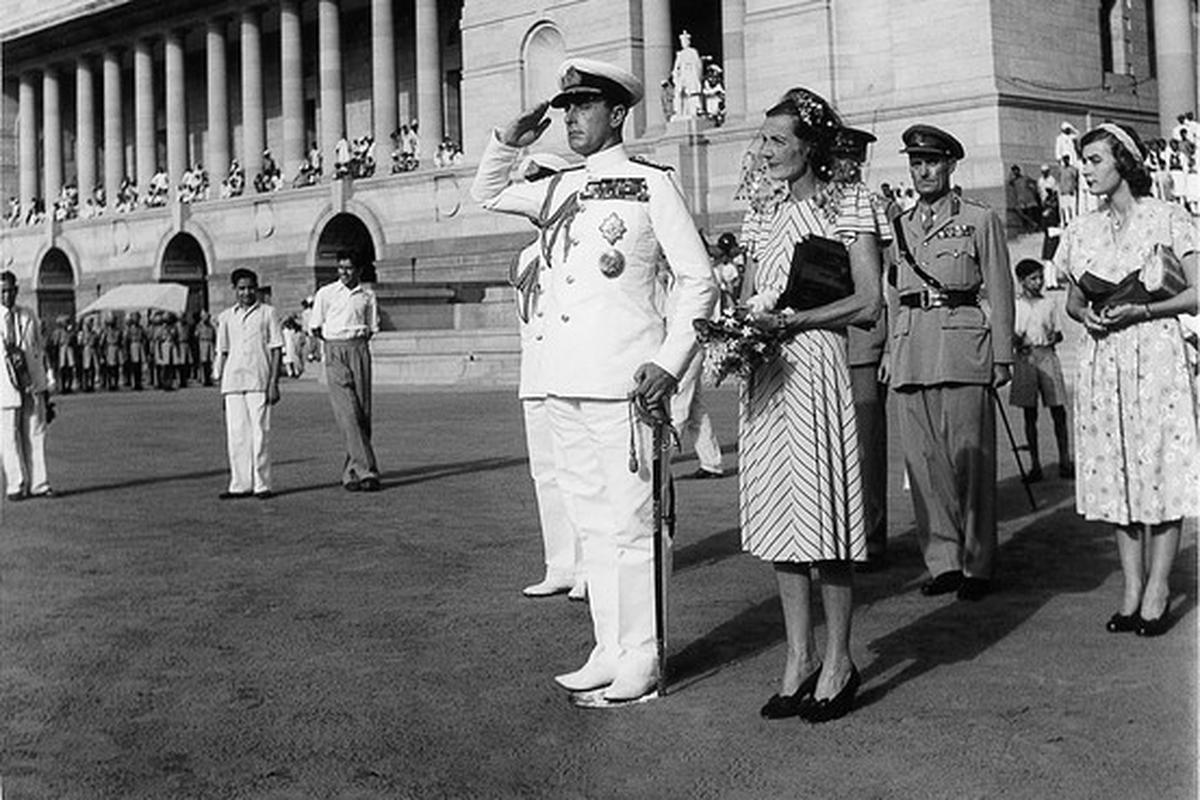
Lord Mountbatten’s salute before leaving India.
| Photo Credit:
Homai Vyravalla
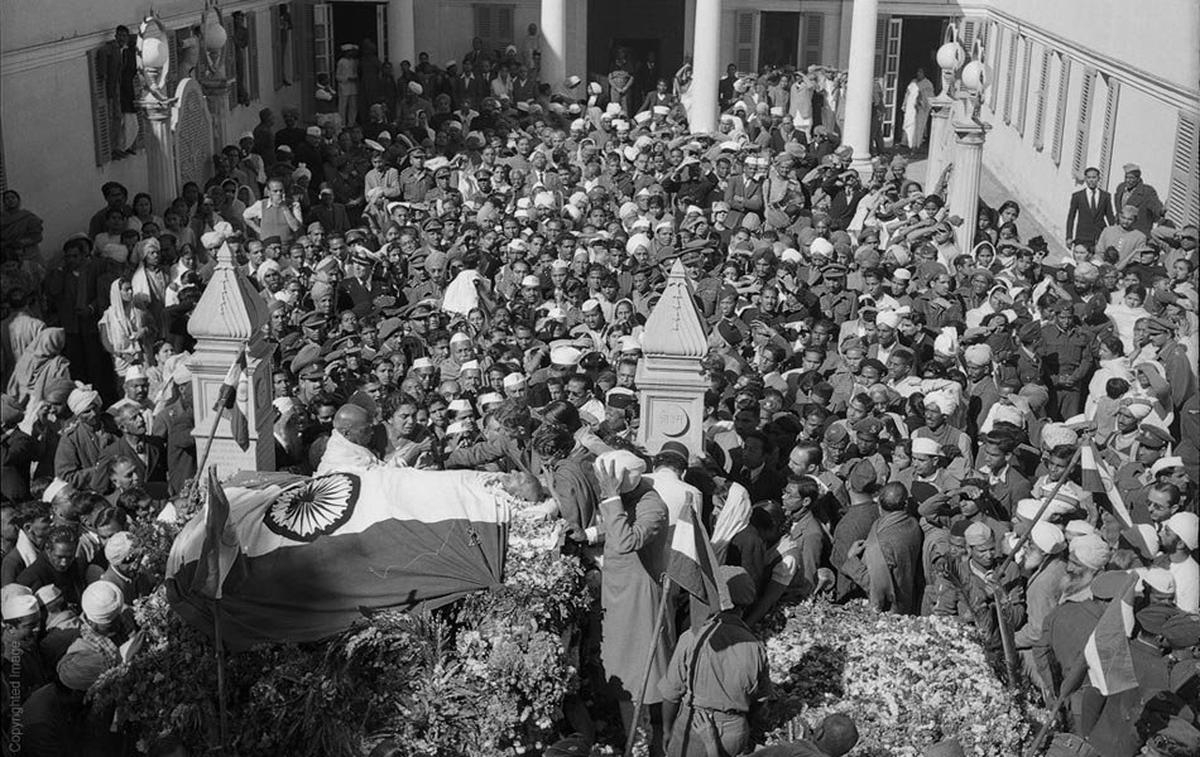
At Birla’s home in Delhi on January 31, 1948, before Gandhi’s funeral began.
| Photo Credit:
Homai Vyravalla
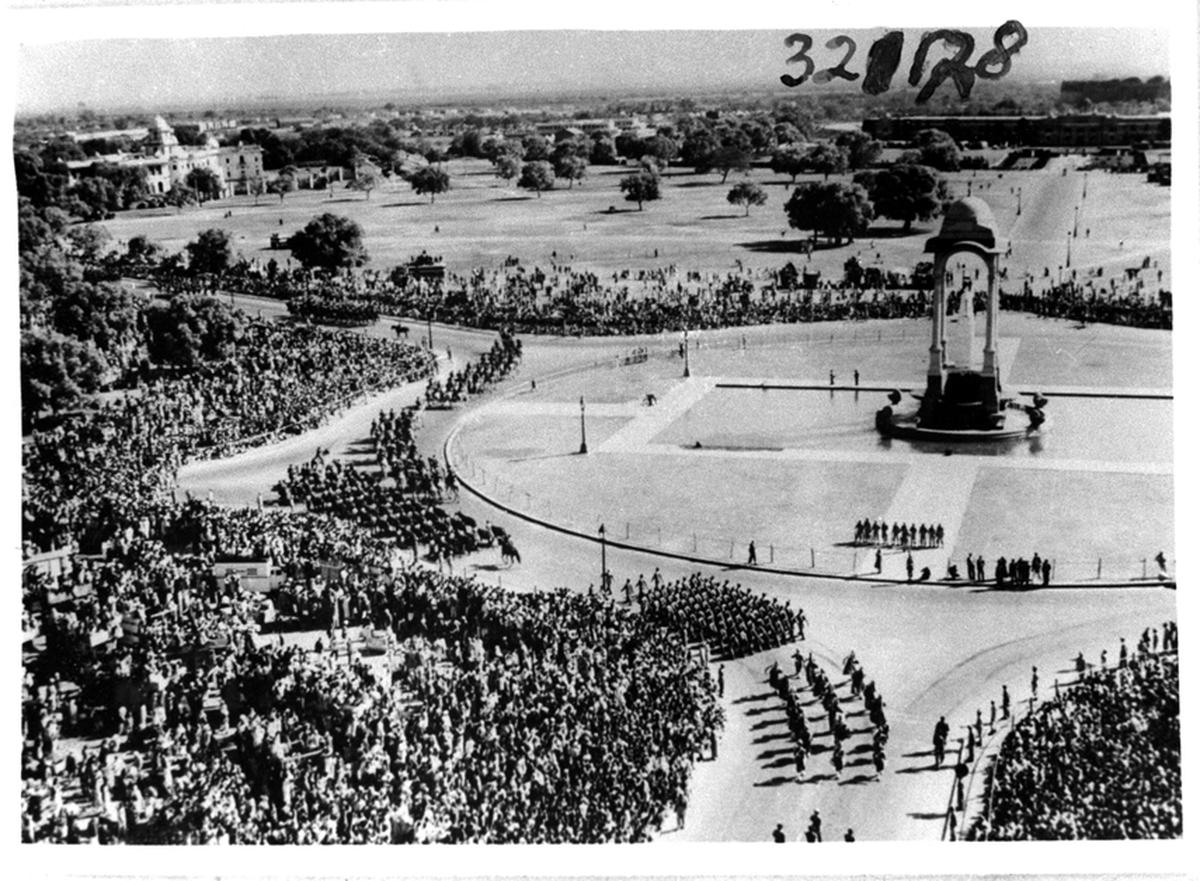
A panoramic view of the Republic Day Parade from India Gate (1953).
| Photo Credit:
Homai Vyravalla
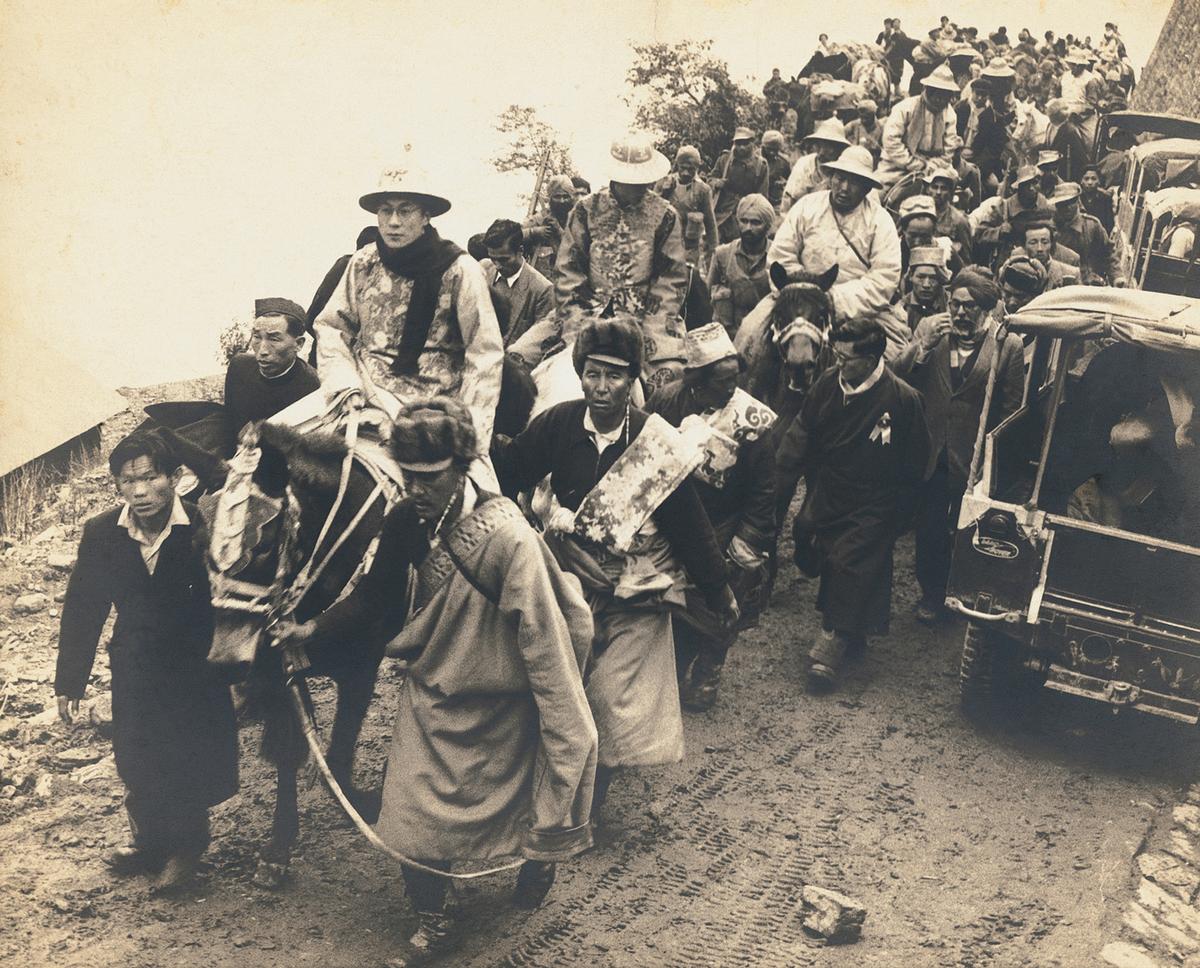
The Dalai Lama in ceremonial dress enters India through a high mountain pass in Sikkim in 1956.
| Photo Credit:
Homai Vyarawalla Archive/The Alkazi Collection of Photography
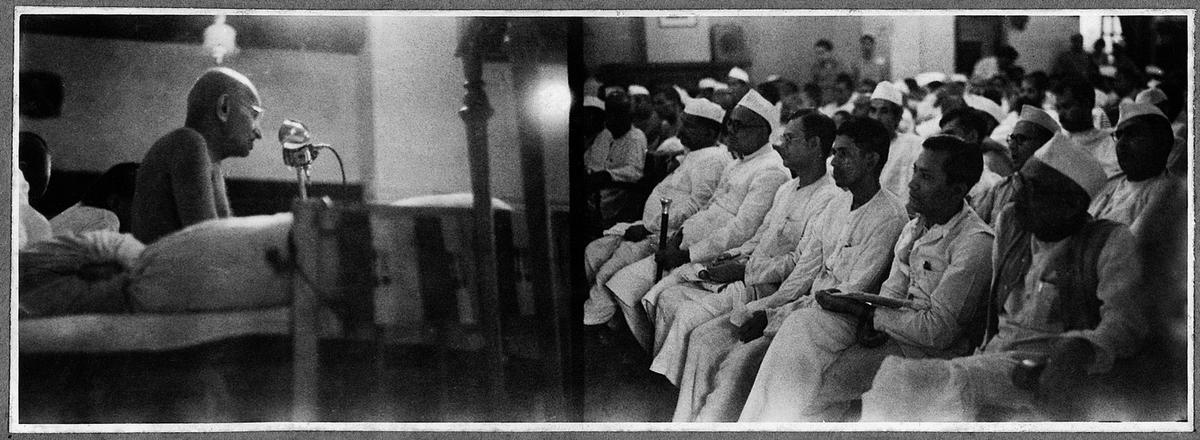
Gandhiji addressing Congress committee delegates.
| Photo Credit:
Homai Vyravalla
Popularly known as Dalda 13, Homai Vyarawalla was born in 1913 in Gujarat into a traditional Parsi family. An iconic figure of the 20th Century, Homai was one of those photojournalists who was a witness to the birth of India as an independent nation and managed to capture the same. At a time when photography used to be an extremely male-centric career, not only did Homai manage to break the gender barrier, but also all societal stereotypes against it being a respectable job.
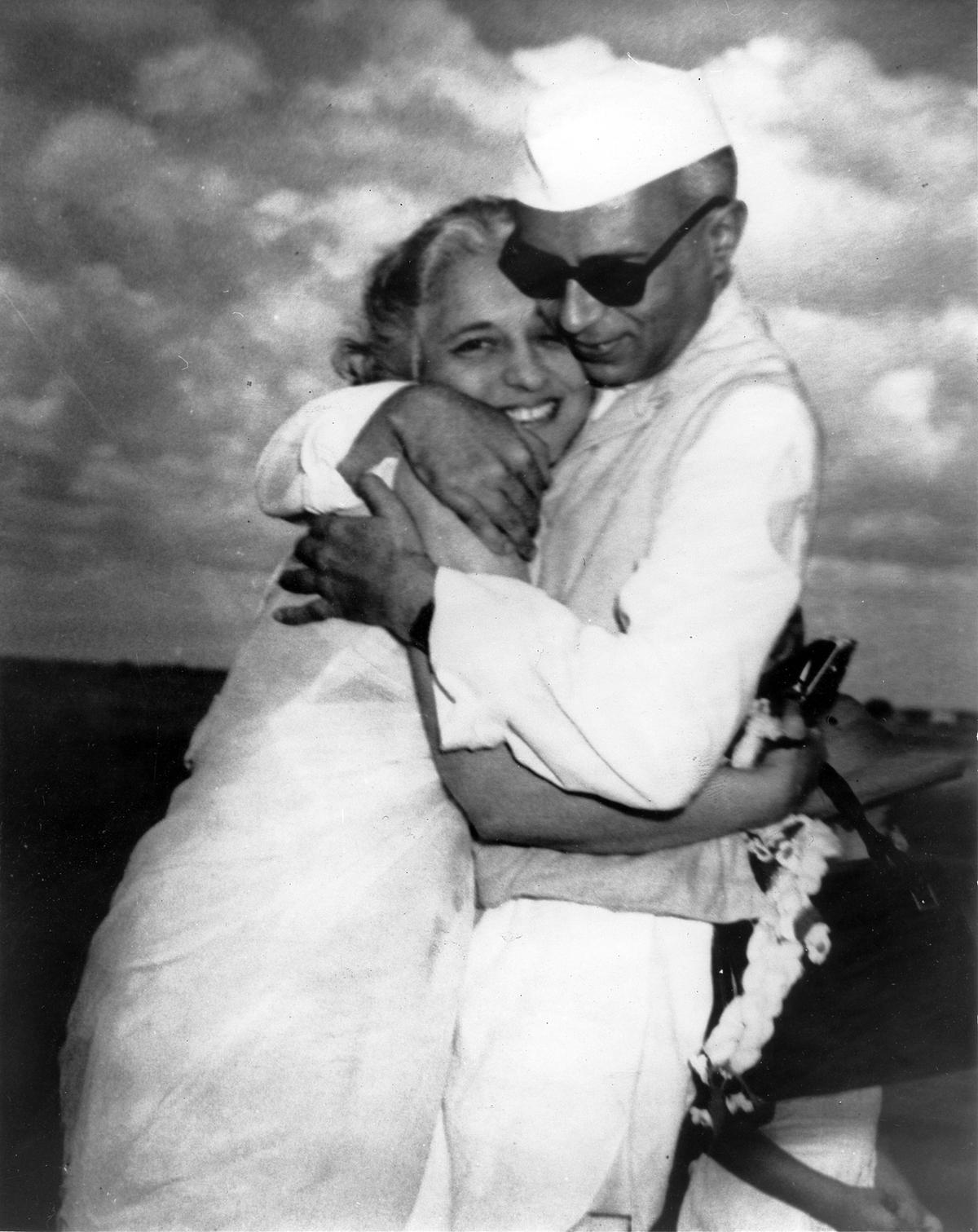
Jawaharlal Nehru with his sister, Vijaya Lakshmi Pandit.
| Photo Credit:
Homai Vyravalla
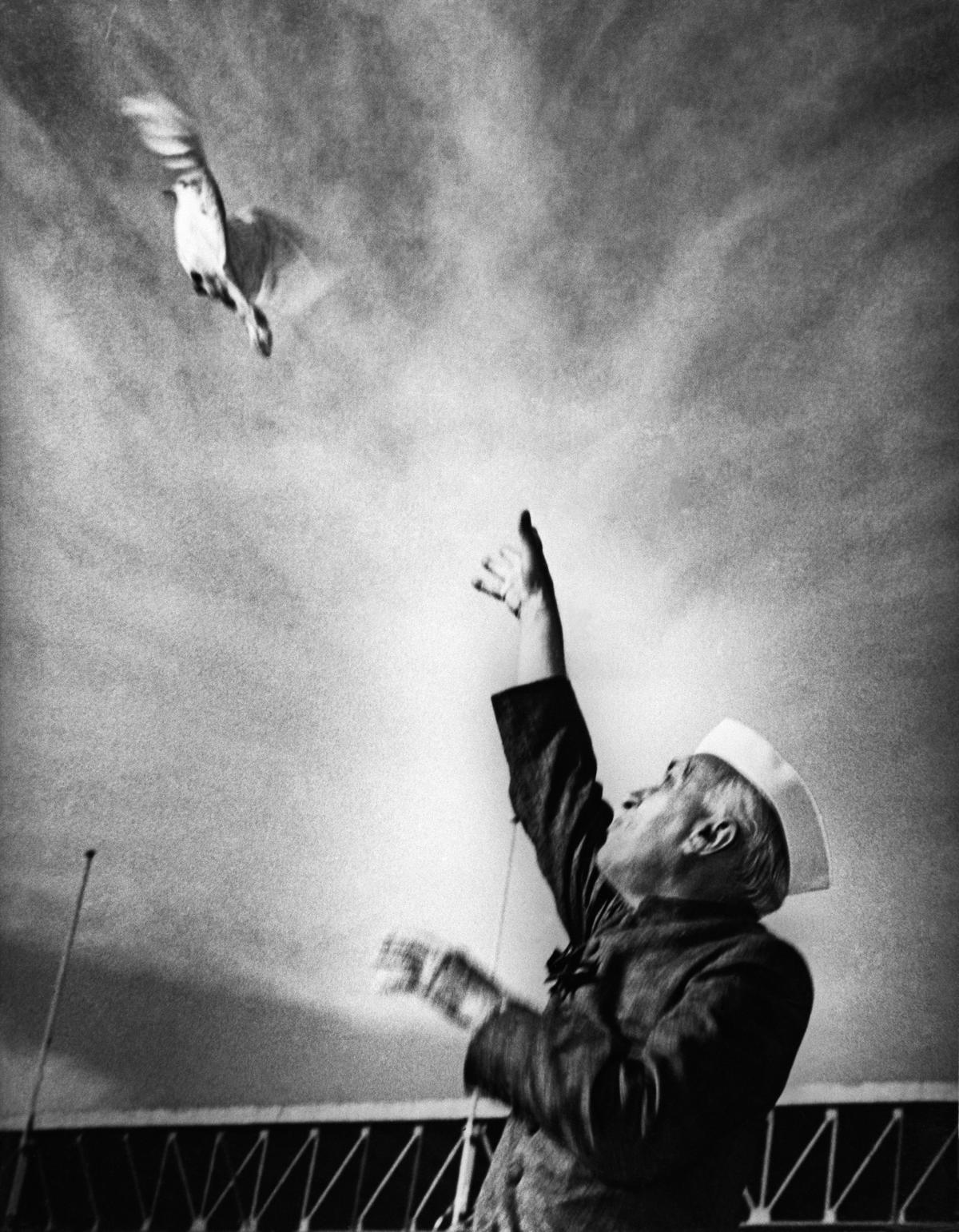
Jawaharlal Nehru at a public event in Delhi
| Photo Credit:
Homai Vyravalla
Childhood in a frame
With her father working as an actor in the popular Parsi travelling theatre culture, Homai led a nomadic lifestyle, exposing her to a world of vivid cultures from the various towns they visited. After settling in Bombay (now, Mumbai), Homai received a good education due to her parents’ determination to ensure their children were well educated.
So after attending Tardeo’s Grant Road High School and becoming the only girl in her class to finish matriculation, Homai attended St Xavier’s and the esteemed Sir J.J. School of Art in Mumbai.
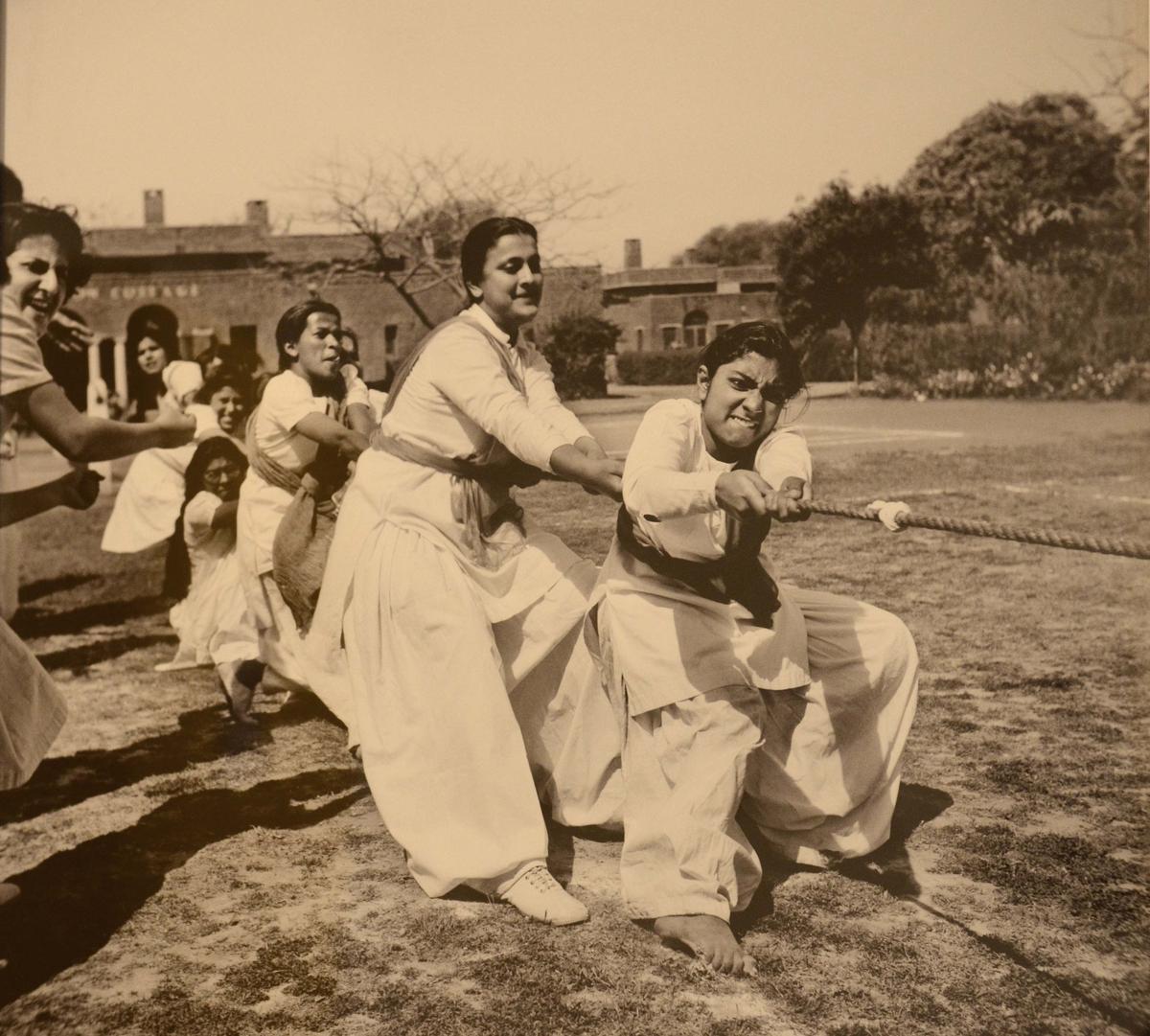
A photograph of ‘Women doing Tug of War’, taken by Homai Vyarawalla, on display at an exhibition in New Delhi on February 15, 2015.
| Photo Credit:
Meeta Ahalwat
The birth of a photographer
It was around the same time as her graduation that she met Maneckshaw Vyarawalla, an accountant and established photographer for The Times of India, whom she later married. After attaining more practical exposure and technical skills under the guidance of Vyarawalla, Homi grew more interested in photography.
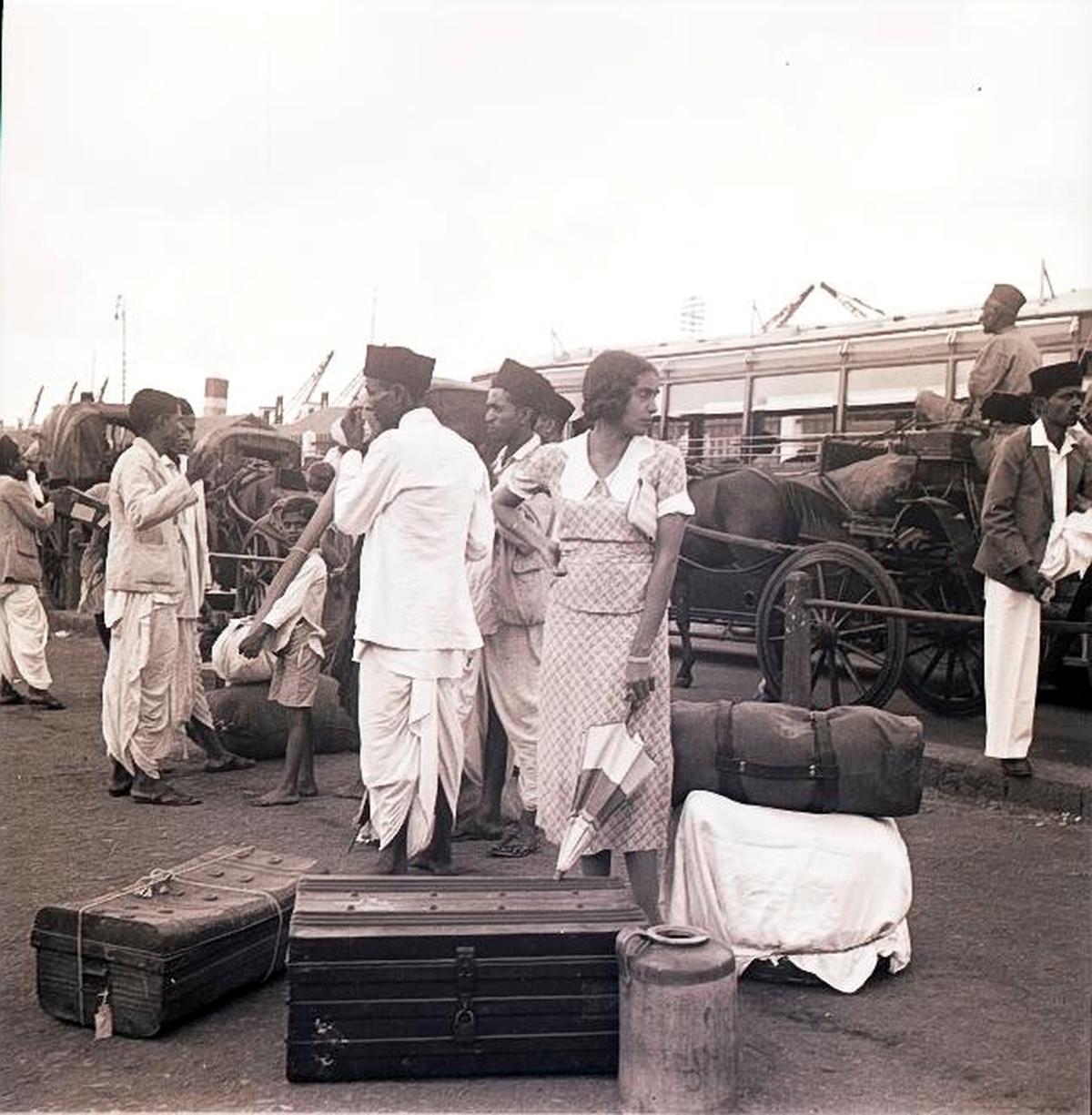
“I hadn’t the slightest clue I would be a photographer. I wanted to be a doctor, but that was the only time in my life that my mother refused to let me do something. She had seen doctors on late-night shifts and didn’t want me in a profession like that. Little did she realise that press photography would be far worse!”
Her first stint as a published photographer was a series depicting a picnic at Bombay’s Women’s Club. Initially, these photos were submitted to The Bombay Chronicle and published under her husband’s name, Maneckshaw, to give them more credibility in the male-dominated profession that photography was in those days. The pseudonym Dalda 13 was also adopted for similar reasons.
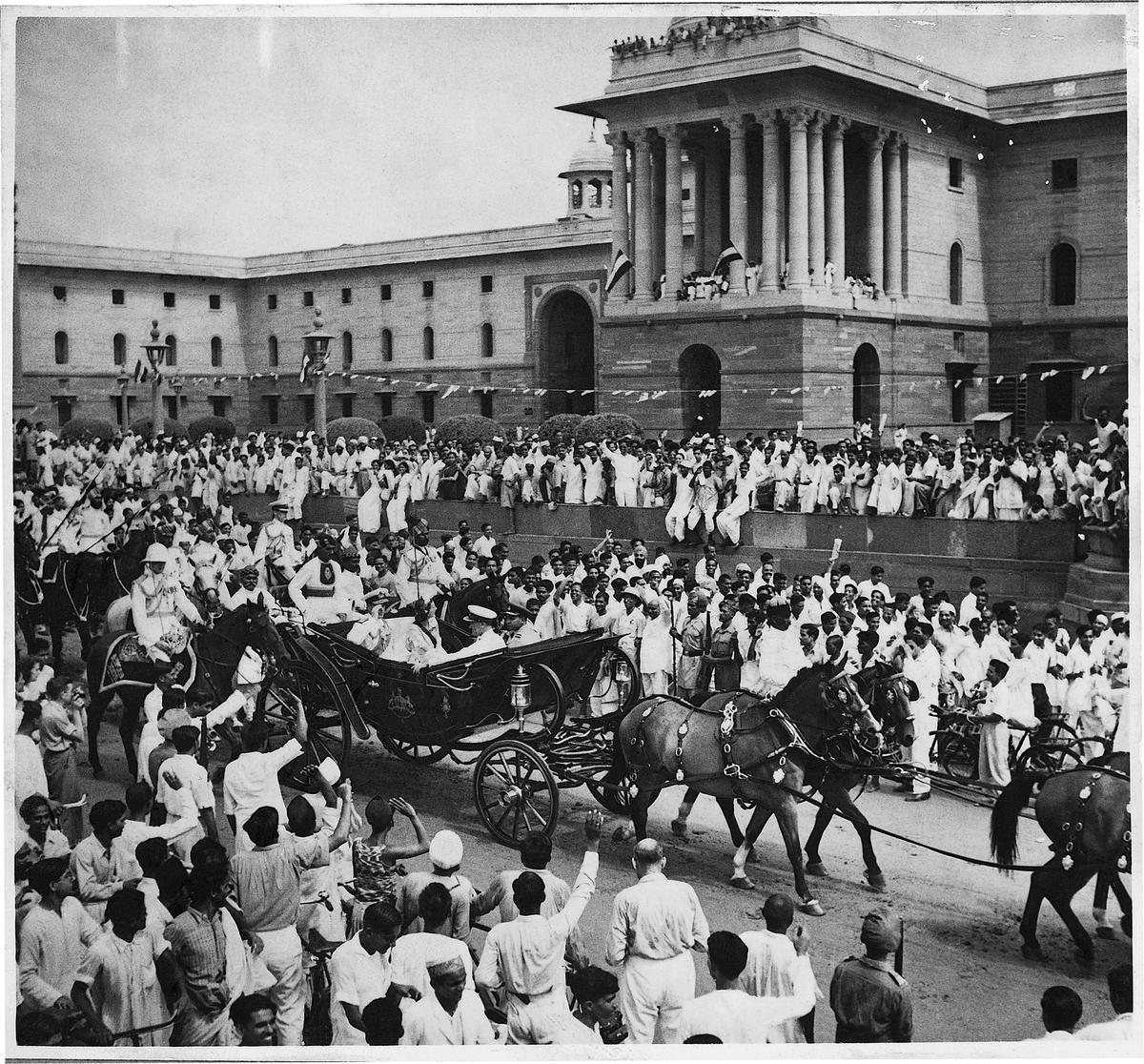
Jubilant crowds surround Lord Mountbatten at Vijay Chowk on August 15, 1947.
| Photo Credit:
Homai Vyravalla
Life behind the lens
Through her work with the British Information Services, Homai Vyarawalla’s photographic career really took off in the 1940s, documenting both everyday Bombay life and a number of horrific events influenced by World War II. Her sympathetic perspective and keen sense of human drama allowed her to capture not only political events but also the zeitgeist of the times.
Homai had the unique opportunity to witness and record pivotal moments in Indian history, such as the end of the British Raj, the momentous transition to independence, and the subsequent establishment of a democratic republic. Icons like Mahatma Gandhi, Jawaharlal Nehru, Dr Rajendra Prasad, and Dr Radhakrishnan were immortalised through her lens. Her photographs, editorial pieces, and freelance work were published in Life, SPAN, and other international publications, earning her respect both at home and abroad. Homai continued her documentation well into the 1960s, capturing candid images of “high society” and occasionally lighter moments of political leaders, like that of Jawaharlal Nehru wearing a mask at a party, that would otherwise be lost in official histories.
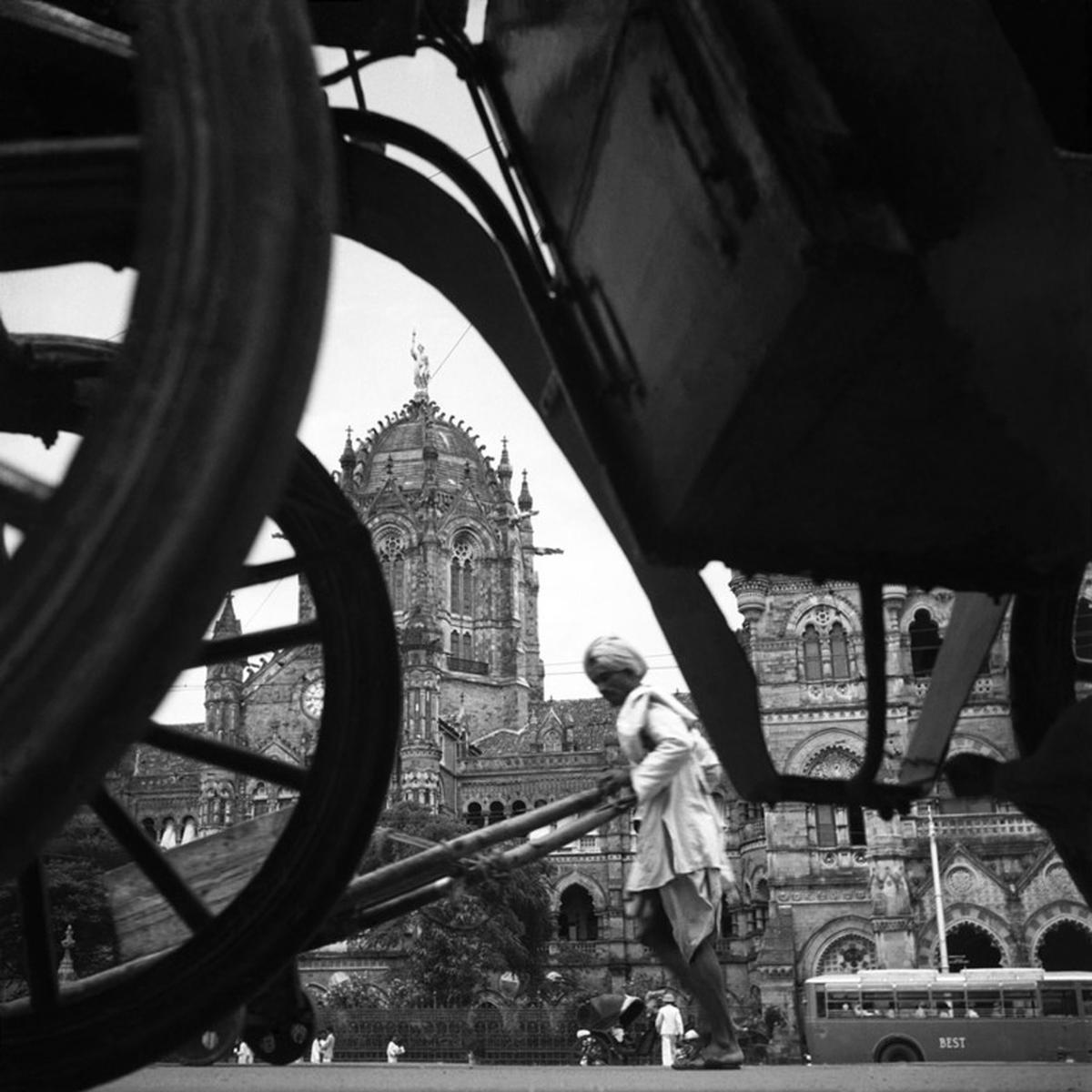
Victoria Terminus in Bombay in 1940.
| Photo Credit:
Homai Vyravalla
Breaking glass ceilings
As the first female photojournalist in India, Homai Vyarawalla broke down gender stereotypes in a field that had been dominated by men for many years. She paved the way for women not only in journalism and photography but also in broader professional circles by having the guts to go into areas that were considered unsuitable for women at the time.
Homai was frequently the only woman with a camera.
In crowded press pools and official events, she was frequently the only woman with a camera, which led to suspicion, interest, and even mockery. Her unwavering professionalism and artistic ability, however, earned her the respect of both leaders and peers. She famously refused to chase news for monetary gain and left the profession in 1970, disillusioned with the rise of paparazzi culture, which intruded on private lives.
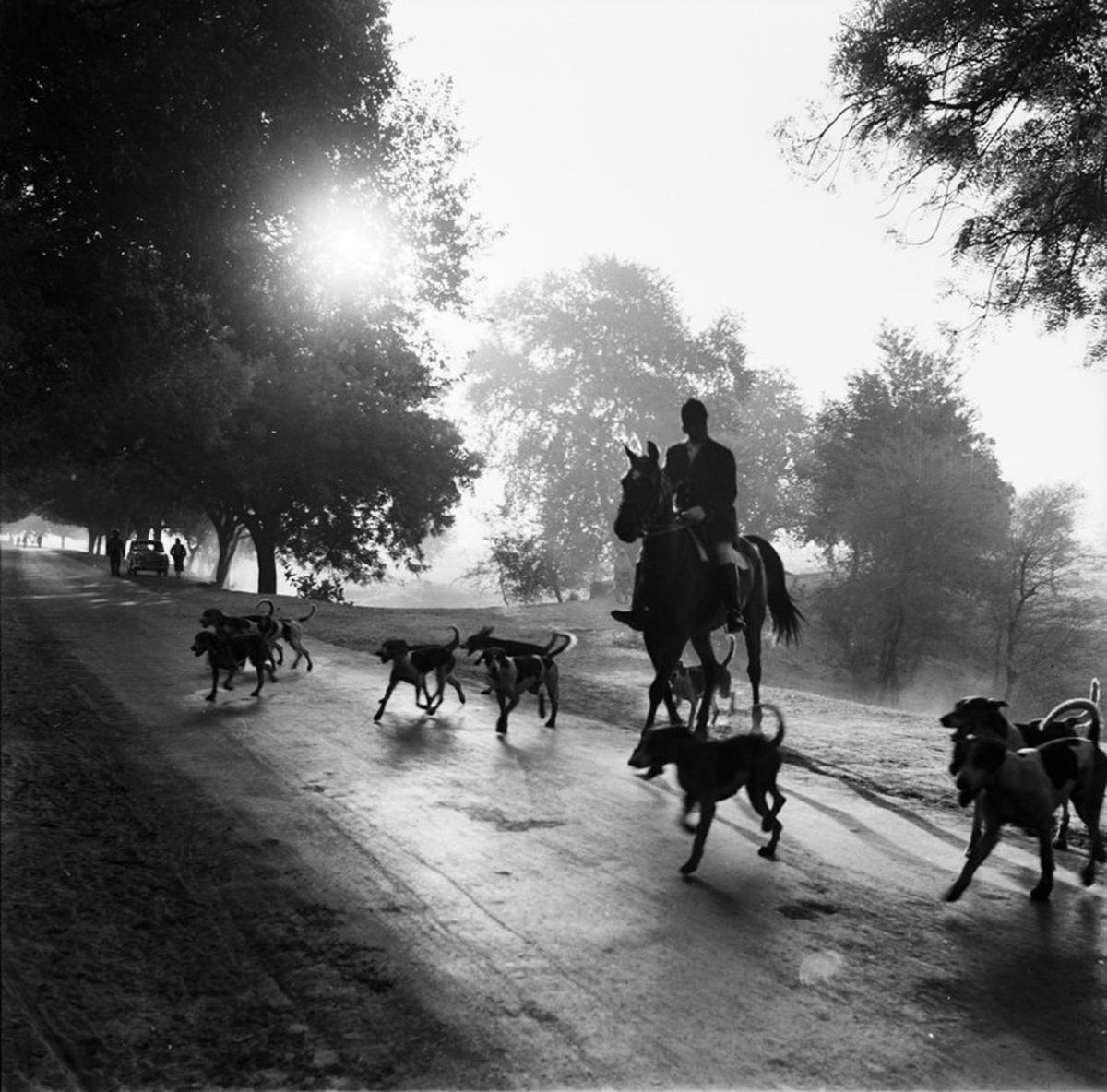
A fox hunt in Delhi led by Colonel Sahni.
| Photo Credit:
Homai Vyravalla
Retiring from the lens
After the death of Maneckshaw Vyarawalla in 1969, Homai stepped away from her career and moved away from Bombay and finally settled in Baroda, Gujarat. She collaborated with the National Gallery of Modern Art in Mumbai during the last decade of her life, curating her work and sharing insights with younger generations.
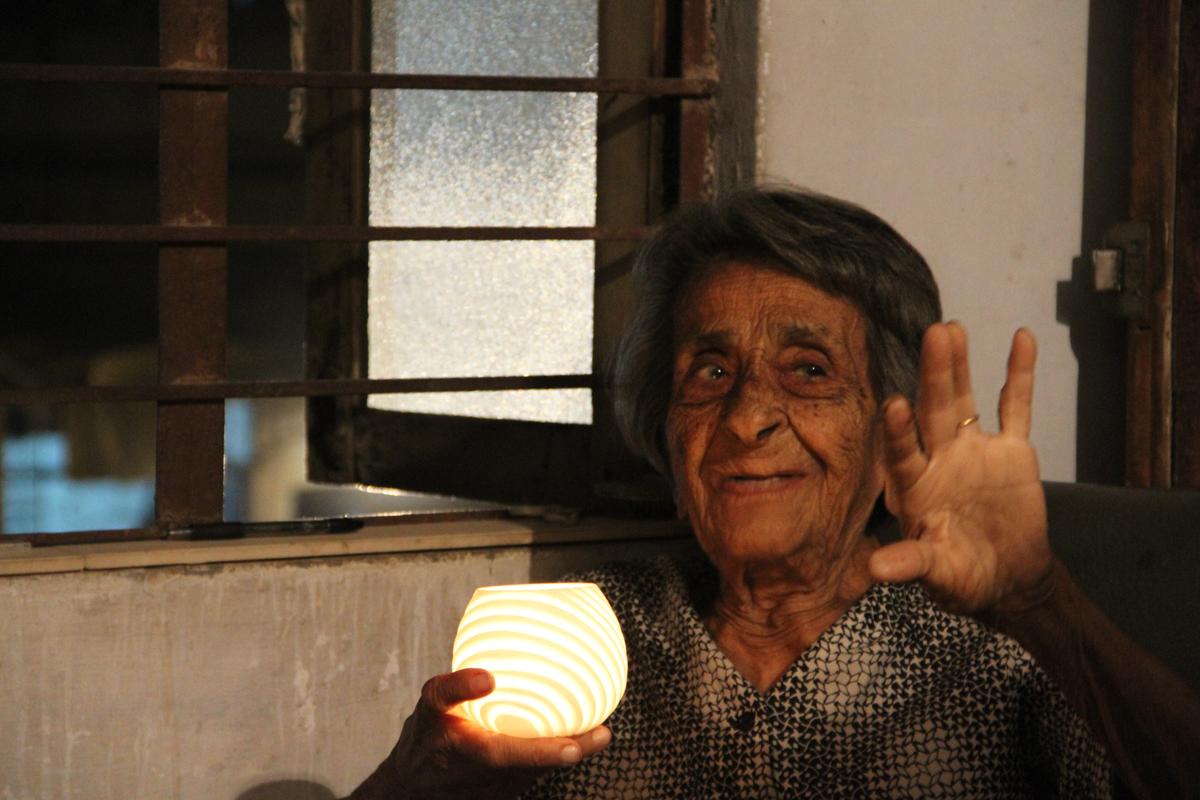
Homai Vyarawalla
A recipient of the Chameli Devi Jain Award for Outstanding Women (1998) and India’s second-highest civilian honour, the Padma Vibhushan (2011), Homai’s journey stands as a beacon of inspiration for anyone wanting to follow the lesser-taken career path. Her photographic legacy is more than a gallery of snapshots—it is a chronicle of India’s passage through one of its most turbulent and promising eras, and her memory continues to live on as an enduring symbol of artistic excellence and gender equality.
Published – October 13, 2025 10:00 am IST



